
- Home
- India
- World
- Premium
- THE FEDERAL SPECIAL
- Analysis
- States
- Perspective
- Videos
- Sports
- Education
- Entertainment
- Elections
- Features
- Health
- Business
- Series
- In memoriam: Sheikh Mujibur Rahman
- Bishnoi's Men
- NEET TANGLE
- Economy Series
- Earth Day
- Kashmir’s Frozen Turbulence
- India@75
- The legend of Ramjanmabhoomi
- Liberalisation@30
- How to tame a dragon
- Celebrating biodiversity
- Farm Matters
- 50 days of solitude
- Bringing Migrants Home
- Budget 2020
- Jharkhand Votes
- The Federal Investigates
- The Federal Impact
- Vanishing Sand
- Gandhi @ 150
- Andhra Today
- Field report
- Operation Gulmarg
- Pandemic @1 Mn in India
- The Federal Year-End
- The Zero Year
- Science
- Brand studio
- Newsletter
- Elections 2024
- Events
- Home
- IndiaIndia
- World
- Analysis
- StatesStates
- PerspectivePerspective
- VideosVideos
- Sports
- Education
- Entertainment
- ElectionsElections
- Features
- Health
- BusinessBusiness
- Premium
- Loading...
Premium - Events
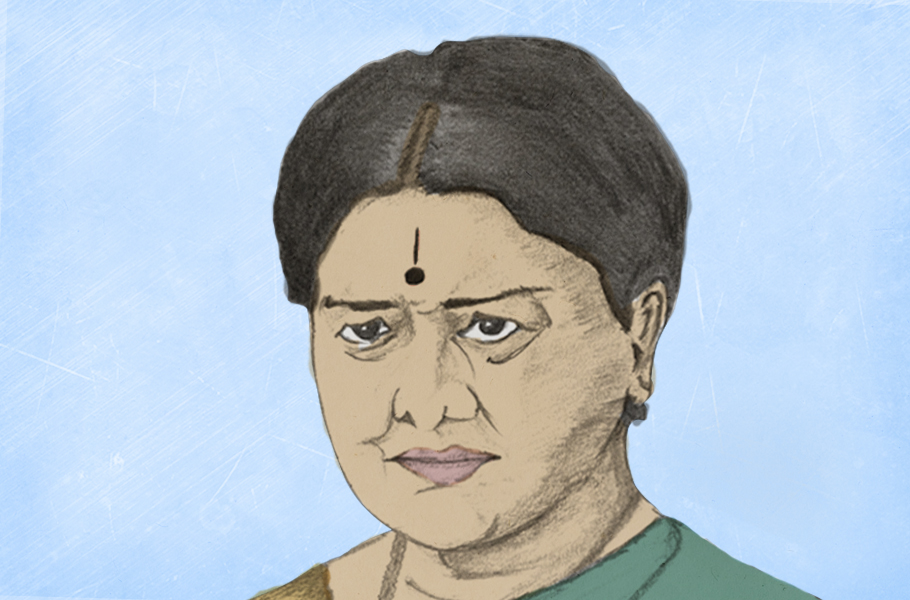
Return of Sasikala: Behind the making and unmaking of an almost CM

Shadow of Jayalalithaa. That is how Vivekanandan Krishnaveni Sasikala is often described. The rise and fall of Sasikala, a confidante of former chief minister J Jayalalithaa, is an interesting and significant chapter in Tamil politics. As she is set to be released from the Parappana Agrahara prison in Bengaluru on January 27 following her conviction in a corruption case four years ago, all...
Shadow of Jayalalithaa. That is how Vivekanandan Krishnaveni Sasikala is often described. The rise and fall of Sasikala, a confidante of former chief minister J Jayalalithaa, is an interesting and significant chapter in Tamil politics.
As she is set to be released from the Parappana Agrahara prison in Bengaluru on January 27 following her conviction in a corruption case four years ago, all eyes are on Sasikala once again.
But why does her return mean so much to Tamil politics?
A best friend, an almost CM
Born on August 18, 1954, Sasikala is the fifth of six siblings from an influential Kallar family. Kallar is one of the three dominant castes under the Thevar community (the other two being Maravars and Agamudayars).
Although her family was originally from Thiruthuraipoondi in the then undivided Thanjavur district, it later moved to Mannargudi.
Sasikala, or Sasi as she is fondly called by her relatives, was introduced to Jayalalithaa through her husband M Natarajan, who was once a hardcore DMK man.
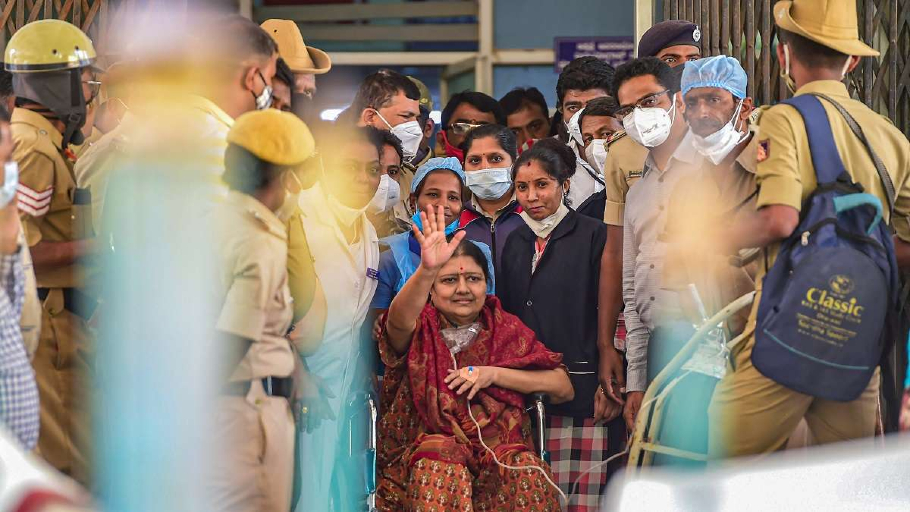
Maruthappan Natarajan born in Vilar, a village in the then undivided Thanjavur, was a studious child. While doing his post-graduation from Annamalai University, he actively participated in the anti-Hindi agitations of 1965 and was introduced to L Ganesan, a senior DMK leader.
Later, Natarajan quit his job as a teacher when Ganesan cajoled him to assist in election work as the latter was contesting the 1967 Assembly elections from Orathanadu constituency.
Following the death of then chief minister CN Annadurai, DMK patriarch M Karunanidhi came to power. In a show of gratitude to those who actively participated in the anti-Hindi protests, Karunanidhi opened up employment opportunities for public relation officers (PRO) in government departments. Natarajan was one of those appointed.
During this time, Natarajan came to know about Sasikala, a distant relative of Mannai Narayanaswamy, a senior DMK leader who had served as agriculture minister in DMK’s first regime. Soon, Natarajan and Sasikala got married in 1973, a wedding which was presided over by Karunanidhi.
There have been strong rumours that even though the couple remained together, the marriage was never consummated. The fact that they didn’t have any children also added grist to the rumour mill. Later, the same rumour mill spinned theories that while Sasikala got closer to Jayalalithaa, she distanced herself from Natarajan.
Cassette shop to Poes Garden
During the Emergency, then prime minister Indira Gandhi dismissed the Karunanidhi government and Natarajan too lost his job. However, he was reinstated when MGR rode to power with his newly formed AIADMK in 1977.
Around this time, the relationship between MGR and Jayalalithaa had strained and she was not seen in films for some time. Then in 1981, she made a comeback. MGR organised the World Tamil Conference in Madurai and Jayalalithaa performed a dance drama that was well received. Realising her potential as a crowd-puller, MGR let her address functions where he could not be present to promote the party’s interests.
In 1982, Jayalalithaa formally joined the AIADMK. Within a year, she was made the party’s propaganda secretary and also appointed as a high committee member for MGR’s pet nutritious meal scheme. She went on to popularise the scheme far and wide, thanks to the state’s first woman collector VS Chandralekha, who was in charge of South Arcot (present-day Cuddalore).
Incidentally, Natarajan was the PRO in the district at that time.
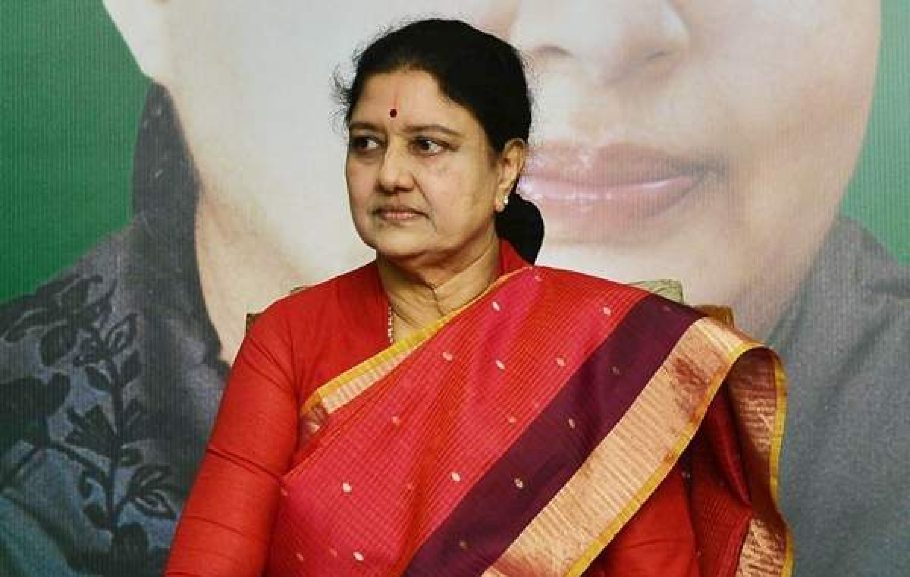
Later, when MGR wanted to groom Jayalalithaa as Rajya Sabha MP, given her good education and English-speaking skills, he transferred Chandralekha to Madras to train Jayalalithaa in parliamentary affairs. Following them, Natarajan too sought a transfer and moved to Madras.
He moved with Sasikala to Alwarpet in Madras. As television sets were gradually entering homes then, Natarajan realised the potential of videography and got Sasikala and her brother Divakaran to set up a video cassette rental shop named ‘Vinod Video Vision’ at Mylapore in Madras. Sasikala chose the name after her favourite brother Vinodhagan.
Besides lending videos, Sasikala also started video coverage of functions of high profile leaders, including marriages. Natarajan used his connections to get these assignments.
Jayalalithaa and Chandralekha, it is said, loved English movies, and whenever time permitted, they got together at the former’s residence to watch films. It was during one such meeting that Chandralekha told about Sasikala’s studio and arranged for cassettes to be delivered to Jayalalithaa’s house .
This is how the doors of Veda Nilayam, 89, Poes Garden—Jayalalithaa’s residence—were thrown open to Sasikala for the first time.
Taking control of Poes Garden
While earning the love and respect of Jayalalithaa, it is believed Sasikala, along with her husband, soon managed to gain control of the house and get rid of some of the most trusted employees.
Madhavan Nair (manager of the house), Jayamani (Jayalalithaa’s driver) and Valampuri John (editor of ‘Thai’ magazine founded by MGR) were among the first victims.
Many years later, John, in a column in ‘Nakkheeran’ magazine, explained how Jayalalithaa became an ‘adimai penn’ (a slave woman).
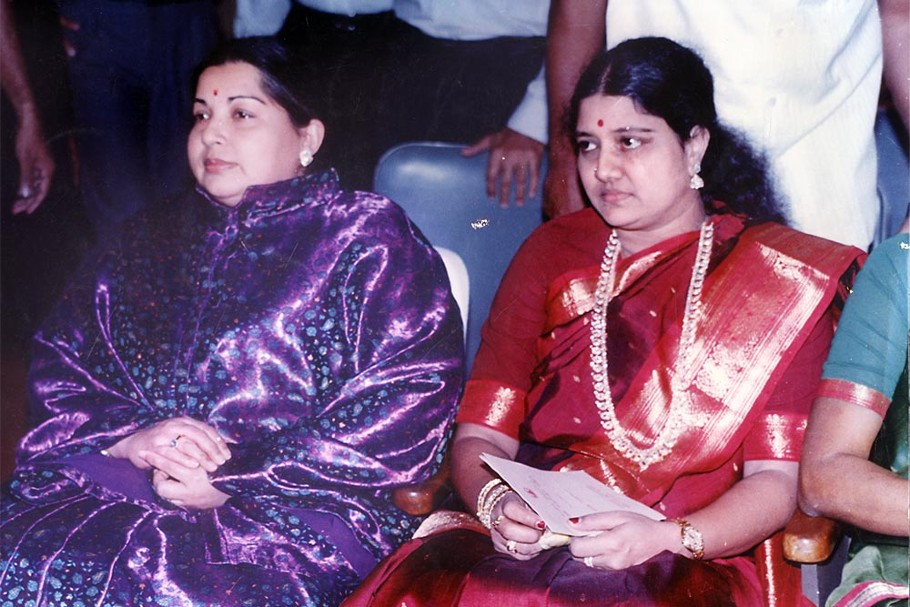
Other regular visitors such as Jayalalithaa’s friend Leela, poet S Raviraj too were stopped from meeting Jayalalithaa. Similarly, the movement of AIADMK’s party leaders such as party office manager Durai, Thirunavukkarasu, KKSSR Ramachandran and Trichy Soundararajan was also restricted. Even Jayalalithaa’s own relatives—such as elder brother Jayakumar—were kept at a distance by the couple, writes John.
“When the Mughal emperor Akbar came to power, he took his first aim at Bairam Khan, his uncle who helped Akbar capture power, and threw him out. Such kind of Mughal blood runs in the veins Sasikala and Natarajan. The acid attack on Chandralekha is a witness to that,” John writes.
“As in the epic ‘Seevaga Chinthamani’ (one of the five epics in Tamil where a character Sachandan (a king who entrusts his regime to his close confidant without knowing that the latter would dethrone him in the future), Jayalalithaa too fell [in the trap] without knowing,” John writes.
Rise of ‘Mannargudi Mafia’
When MGR died in 1987, Jayalalithaa stood by his coffin which was kept at Rajaji Hall. Natarajan made Sasikala stand beside Jayalalithaa.
When Jayalalithaa was shamed and heckled by the supporters of Janaki, MGR’s widow who had staked claim to the chief ministership, it was Sasikala who consoled Jayalalithaa.
In the following days, to prevent further attacks on Jayalalithaa, Natarajan deployed a security team under Sasikala’s brother Divakaran. To support him, her nephew TTV Dhinakaran, too, moved to Veda Nilayam.
Natarajan also played an important role in stopping Jayalalithaa from quitting her MLA post and exiting politics once and for all in 1989. Because of this, Natarajan earned a soft spot in Jayalalithaa’s heart and he was given a separate room in Veda Nilayam. He used to stay in the room only when Sasikala resided there and during her absence, he used to stay in his Alwarpet house.
As the clout of Mannargudi mafia—a moniker used to describe Sasikala’s family —grew, the distance between Jayalalithaa and AIADMK’s senior leaders and cadre also increased.
As the bitterness grew among some top leaders, they urged Jayalalithaa to keep the ‘Mannargudi family’ out of party affairs, but Jayalalithaa reportedly told them that they were her “well-wishers”.
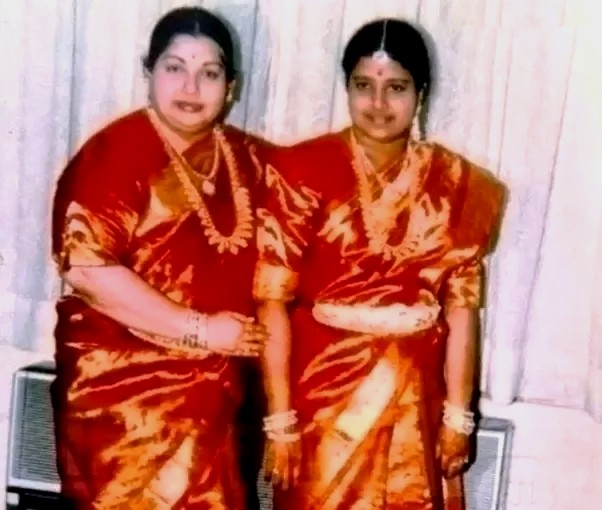
A house of black magic
Along with the attrition, Poes Garden, many claim, also turned into a house of black magic gradually. Since Jayalalithaa and her mentor MGR believed in astrology, it was quite easy for Sasikala to put Jayalalithaa under a ‘trance’ in the name of stars and zodiac signs whenever a major political decision had to be taken.
This went to such an extent that AIADMK cadres who showed an interest in contesting elections were asked to bring their horoscopes during the interview.
There were two astrologers who played an important role during this time. One was Kaliyur Narayanan, who said in the 1990s that Jayalalithaa cannot be shaken in Tamil Nadu politics for another 25 years till 2016. The claim was supported by John, who recorded it as a fact in his column.
The other was Vadugapatti GK Dharmaraj, a one-time film producer who later became an astrologer for some high-profile individuals in the film and political world.
It was during one such consultation with Sasikala that he said that she could become the chief minister of the state. It almost turned out to be true in 2017, even if only for 10 days between February 5 and 14 when Sasikala almost became the chief minister after being unanimously elected leader of the AIADMK. (On February 14, she was convicted in the disproportionate assets case.)
Sister from a different mother
As Jayalalithaa chose to remain unmarried and had no children, people around her often speculated as to who would inherit her assets. Sasikala, in order to prevent Jayalalithaa’s siblings or relatives from gaining control, cajoled the latter to adopt her sister Vanithamani’s third son Sudhakaran. She made this demand during the marriage of Vanithamani’s second son Baskaran. A couple of weeks before the marriage, Jayalalithaa announced Sasikala as ‘Udanpiravaa Sagothari’ (sister not related by blood).
More than any other scam or governance failure, the incident that affected Jayalalithaa’s reputation the most, and eventually led to her downfall, was the big fat wedding of Sudhakaran in 1995. It came to be known as the mother of all weddings and even made it to the Guinness World Records for hosting a massive 1.5 lakh guests.
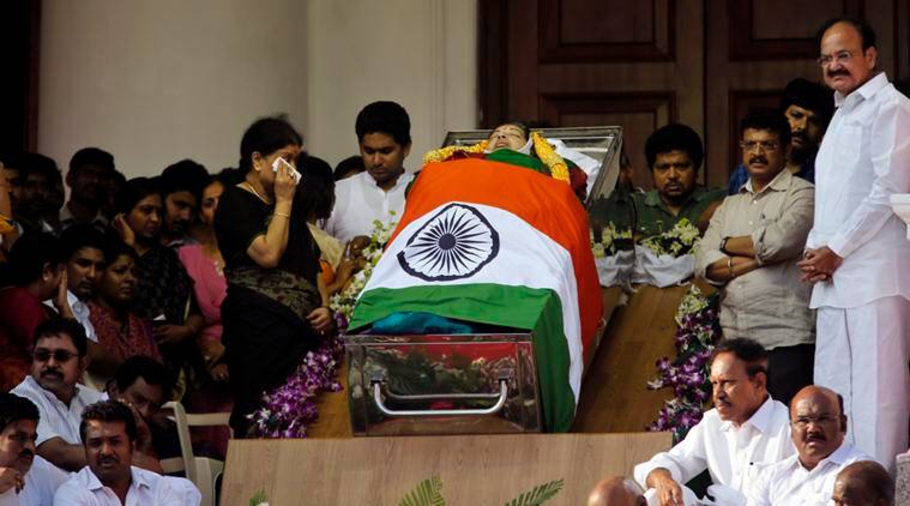
With that, a slew of corruption cases were slapped on Jayalalithaa, Sasikala and her family.
Sasikala was arrested in 1996. Before her, Baskaran and Dhinakaran were arrested for irregularities in JJ TV (now Jaya TV) and foreign investments, respectively.
Evidence linked all cases to Sasikala but she did not name Jayalalithaa in any of them, proving her loyalty, which came useful till the latter’s death in 2016.
The only time when the Mannargudi family kept away from Veda Nilayam was between December 2011 and March 2012. Enraged by repeated allegations that Jayalalithaa was under the influence of the Sasikala-Natarajan family, Jayalalithaa evicted them to show that she cannot be influenced by anyone.
The Tamil media then termed this eviction as ‘Sasi Peyarchi’, rhyming with ‘Sani Peyarchi’, where Saturn transits from one zodiac sign to another. Saturn and the god associated with the planet, lord Saneeswara, are seen as evil. When Sasikala was evicted, people close to Jayalalithaa heaved a sigh of relief, but that was only for a short time.
The unseen side
“What people believe today about Sasikala is the image painted by the media in all these years. It is only a handful of people who really know about Sasikala’s unseen side,” says Era Saravanan, journalist-turned-filmmaker. Saravanan was the first to term Sasikala’s family as ‘Mannargudi mafia’ while he was working with Junior Vikatan, a biweekly magazine.
He was also the first print journalist to interview Sasikala following Jayalalithaa’s death, one that showed the ‘emotional and kind’ side of Sasikala.
“I was termed a supporter of Sasikala and got trolled online and offline (for that article),” Saravanan says, adding, “But what I wrote was what happened on that day, I felt her emotions and words were true.”
He received the same kind of reaction after he interviewed DMK MP Kanimozhi when she was in Tihar jail, he says.
But Saravanan stresses that when Jayalalithaa’s body was brought from the hospital and kept in Veda Nilayam, Sasikala was inconsolable. “Her hair was dishevelled and she behaved like any other woman who had lost someone very dear.”
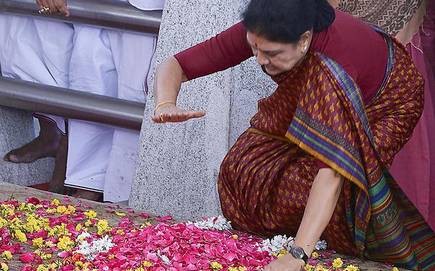
“At that time, except a few people, no media or other big shots were allowed inside. I had managed to slip in. Natarajan was also there.” Saravanan says if Sasikala had cried and wailed in front of public and media, she could have earned sympathy and a good name. “But she chose to cry in private and remained calm in public. When Jayalalithaa’s body was kept in Rajaji Hall, she didn’t shed a tear. She did not even show any kind of hurry in welcoming Prime Minister Narendra Modi who came to pay his respects,” he adds.
Saravanan also believes that Sasikala kept a close eye on Natarajan during that time.
“When Jayalalithaa was alive, the distance between Sasikala and Natarajan was obvious. But even after her death, Sasikala chose to maintain distance from Natarajan. Only when Natarajan was on his deathbed did she meet him,” he says, stressing this is a show of her loyalty towards Jayalalithaa and the party.
“Many people think that if Sasikala had so much money she could have used it to escape conviction after Jayalalithaa’s death. But she chose not to do so because it could have tainted her relationship that she shared with Jayalalithaa all these years,” says political commentator Tharasu Shyam.
She wanted the government to remit her sentence on the basis of her good conduct, served her term in jail and paid the fine. After the release, criticising her for past crimes and conviction are going to be meaningless, he adds.
Interestingly, in all these four years in jail, Sasikala never criticised the Edappadi Palaniswami government, despite the party’s efforts to desert her.
“She is loyal to the party and wants to save it. That’s why she is remaining silent. She will be in active politics after her return and guide the party,” Saravanan says.
But Shyam warns: “It is the same loyalty that has left Sasikala alone.”
